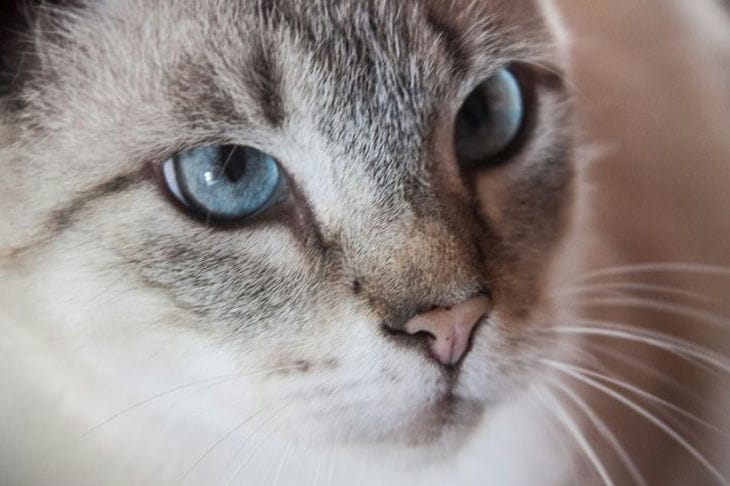Does Your Cat Bite? Experts Offer Tips on How to Avoid It
Find out what happens when your beloved cat bites you out of nowhere.
You're petting your cat and she makes a happy face, clearly welcoming you. Suddenly, she grabs your hand with her teeth. What just happened?
Cats have problems with intimacy and can become overstimulated quite quickly. If you have a cat that spanks and bites you during friendly petting, you already know this.
One minute she's asking to be petted, and the next minute she's telling you to stop - right now! This sudden transition is often the result of conflicting emotions.
Many cats both love and hate being touched, and which side wins can change from moment to moment.

Cats know this about other cats, so they limit their friendly physical contact.
Fellow cats may sleep side by side and even intertwine their tails. But there is no active touching involved in this closeness; it is all about being close to each other without unnecessary stimulation.
Friendly cats may touch noses or foreheads for 5 to 10 seconds. They may rub against each other for 10 to 20 seconds.
They may lick each other's faces and heads. But when the licking continues for more than 30 seconds, it can turn into a fight. Even between cats, a little petting goes a long way.
The Right Way to Pet a Cat
We can pet our cats in a cat-like manner, holding them close to the head and neck, keeping petting sessions short and enjoying the contact that comes from closeness without active touch.
Of course, there are cats who love to be petted forever, cats who can tolerate petting for about five seconds, and cats who are somewhere in the middle.
It's all a matter of personal preference. And honestly, humans are like that too! Some of us are very touchy, some can be more indifferent, and countless others tend to fall somewhere in between.
When I hug my husband and start to feel a little awkward, I say, "Honey, I've had enough," and we stop.
What would happen if he held me down and forced me to continue hugging? Would I trust him? Would I want to hug him again?
How to Understand Your Cat's Signals
Our cats have their own way of saying, "I've had enough" or "Don't touch me there." Sometimes they just walk away. Sometimes it's more subtle, like a hint.
Some cat versions of the phrase "I've had enough" look or sound like this:
- She can make sounds (except purring).
- Her ears may be set back, to the side, or flat against her head.
- She may start lashing her tail.
- Her skin may twitch.
- Her pupils may dilate or appear like slits.
- Her claws may come out.
- Her whiskers may protrude forward.
- Her legs or shoulders may become tense.
- She may stare at your hand.
- She can lift her paw.
If you don't listen to these signals, your cat will have to scream - by hissing, slapping or biting.
To teach your cat the "I've had enough" signal, pet her gently only when you can look directly at her, not while you are watching TV or talking on the phone.
Watch for even the slightest changes in your cat. As soon as you see this, stop petting. If you are not sure, stop petting anyway.
If you don't stop petting the moment the cat signals that it has had enough, you leave it with no choice but to escalate the situation. And then, if you get bitten, it's not the cat's fault - it was trying to warn you.
Remember to respect your cat's preferences.
What to do if you can't figure out what your cat's body language is telling you about its boundaries? Earn its trust. Just pet the cat twice and remove your hands.
If she decides to stay close to you, wait a few minutes and then pet her twice more.
Leave her wanting more. When she sees that you are not going to overwhelm her, she will relax and you can gradually work up to a few more strokes.
Once you learn your cat's personal preferences and respect them, something wonderful will happen: she will begin to allow more affection.
She knows you will stop as soon as she asks, so she feels less ambivalent about it.
She knows that she doesn't have to resort to biting to get her point across, that you will respect the smaller, more subtle signals. And this teaches her that you are a trustworthy person.
It is important to remember that companion animals have the right to decide when they want to be touched, where they want to be touched, and how long they want to be touched.
Our cats want to know that we will respect their boundaries. When we do this, there is no need to bite.
Earlier we wrote about why a cat sits like a human.
